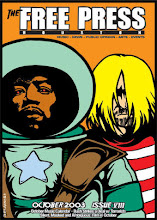Rudo y Cursi

A big hit in Mexico where it was released last year, Rudo y Cursi stars Gael Garcia Bernal (as Tatto) and Diego Luna (his half-brother Beto) in a rags to riches story that involves soccer and misplaced brotherly love.
The concept of the charolastra or space cowboy may be lost on Anglos but it's how Tatto views himself. After he becomes a famous soccer player he uses his swiftly burning celebrity to produce a music video wherein he sings Cheap Trick's "I Want You To Want Me" ("Quiero que me quieras") dressed in a hideous western suit complete with good guy white hat. [See below video.]
Beto and Tatto live in a coastal town in abject poverty. Their common mom's new boyfriend lacks common sense or decent traits (yet he's a cop) and life at home holds little future whether due to lack of money or Bete's penchant for gambling (he just lost his wife's blender on a bad bet). A scout for soccer teams, while waiting to get his flat tire fixed, spies the brothers working out during an ad hoc soccer match. One offer leads to Tatto being invited to try out in Mexico City with a pro team, much to Beto's chagrin since he considers himself the better player.
Tatto's gets his chance to shine and he's eventually on his way to sports stardom with Beto soon following. Rudo y Cursi finds a way to weave in social commentary while following the brothers on their upward trajecectory. Thing is, even after making it to the top Tatto's still too innocent to handle his new model girlfriend or come to the realization his singing reeks of vanity rather than talent. Beto still has his family to support. These guys have all the fame and money a person could want and still nobody likes them.
Rudo y Cursi marks the directorial debut of Y tu mama tambien co-writer Carlos Cuaron. Unlike his brother Alfonso (Children of Men) Carlos doesn't know where to put the camera and Rudo y Cursi often seems lost in its own setting. The film is more dramedy than overly comical. The balancing point are the polished performances from Bernal and Luna. This duo certainly lends a Redford-Newman vibe to any international or Mexican film in which they star.









